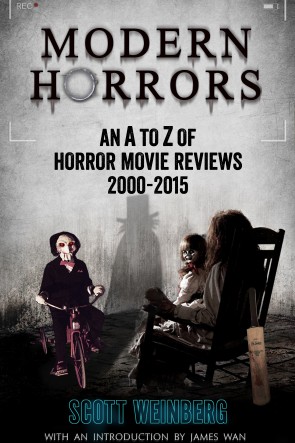Retro Review: LET ME IN (2010){0}
Let’s just point to the elephant in the room right now and get it over with. Yes, the 2008 Swedish horror film Let the Right One In is sort of what you’d call an “instant classic.” I (and dozens of my festival colleagues) adored the film during its film festival run, the rest of the critics were equally enthusiastic when it hit the local arthouses, and the intrepid movie-lovers who (god love ‘em) have no issue with subtitles also seems blown away by the quietly disturbing tale of “young” friendship and vampirism.
That film was based on a novel written by John Lindqvist, and nobody seemed to mind that such a recent book was made into a film so quickly — so why then are so many horror fans up in arms about this big-budget quick-turnaround “Americanized” remake? I chalk that up to simple affection for the source material(s), which is admirable, and also the fact that horror fans get burned by lazy remakes at least six times a year.
But part of my job is to gauge the inherent “value” of a remake — and I’ve seen them all. From blissful classics to The Fly and The Thing to worthless chaff like Prom Night and Sorority Row, every remake gets a fair shake to stand on its own two feet. Having said that, Matt Reeves’ Let Me In is some sort of stunning aberration: a quick-turnaround remake of a highly-regarded foreign film that, against all odds, strikes out in confident fashion and stands as its own film. If you ask any more than that from a remake, you’re dabbling in what we call futility.
The plot focuses on a lonely young boy who befriends a strange new neighbor girl — only to discover that she’s got some serious problems. Namely … she’s a vampire. Not the floridly emotional or overtly whiny sort of vampires that seem so popular these days, but the old-school vamps who avoid sunlight like the plague, cannot survive without human blood, and (as the title indicates) are not permitted to enter your home without full permission. But the film, like its predecessor, makes the oldest of vampire cliches new again by presenting them through the eyes of children.
As usual, the horror genre allows for ideas, themes, and subtextual roughage that other sub-genres cannot: in the guise of a melodrama or (even worse) a comedy, the tale of Owen and Abby would come off as precious, sappy, or simply unpleasant. But Reeves and his two young leads (Kodi Smit-McPhee and Chloe Moretz, both excellent) are able to present the uncomfortable stuff between moments of realistic levity, curious morbidity, and strangely touching exchanges.
Basically, the story (and I mean all three versions) is a horror-laced metaphor for the untold number of fears, worries, and insecurities that attack us all during early adolesence, and Mr. Reeves’ version does a staunchly consistent of keeping the realism couched in a darkly believable fairy tale. It certainly doesn’t hurt that Greig Fraser’s quietly striking cinematography is lovely to behold … or that Michael Giacchino’s old-school spooky score is a thing of aural beauty ,,, or that character actors Richard Jenkins and Elias Koteas steal huge chunks of the movie on their own…
Mr. Reeves (directing his second film after the monster movie throwback Cloverfield) approached the source materials (both the book and the first film version) with nothing but respect and admiration. His “new version” looks like a dark, melancholy dream; it moves forward and captivates with next to no effort; it’s bolstered by a pair of stunning young actors; and (best of all) it doesn’t diminish the first film’s unexpected poignancy or its stunning moments of brutal violence. This is a remake that clearly admires its predecessor, and that’s something you cannot fake.








